Many years ago I packed my bags and headed for San Sebastian, to learn Spanish at Lacunza International House San Sebastian. I booked a 3-month course, but ended up staying a whole year. San Sebastian is also known as Donostia or simply Donosti for short, which is the Basque name of the city. The locals call themselves ‘Donostiarras.’
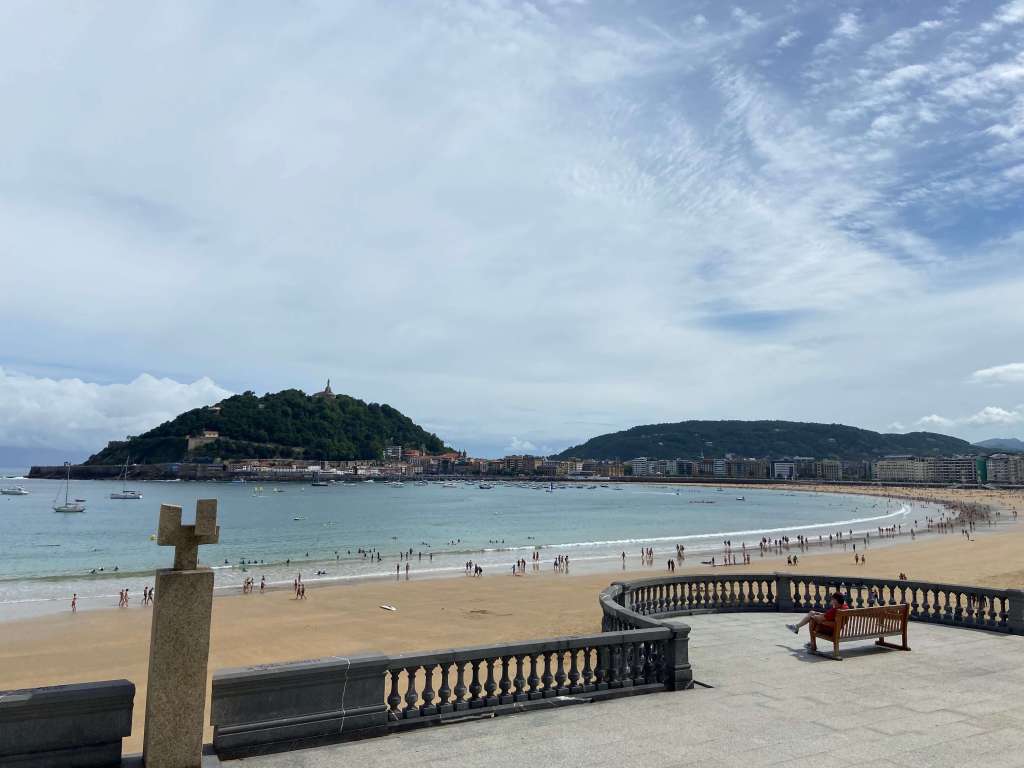
If you’ve been learning Spanish for years and want to master it once and for all, or have been thinking about learning it and want to make sure your language journey is effective, I always recommend a course abroad.
With the increase in remote working patterns, the option of freelance work and flexible working hours, such courses are more financially viable for a lot of people these days, and my, are they effective, if you put the work in from the get go!
The time I spent living in San Sebastian and studying at Lacunza changed the course of my life in ways I’m only hazily aware of due to the old butterfly effect! What I can say for sure is that I would recommend Lacunza and the culinary capital of the world to anyone wanting to live out their language dreams.
Here’s a snapshot of what’s worth knowing about studying at Lacunza:
School location
The school is less than 20 minutes from Zurriola beach (the surfing beach) and from the Parte Vieja (Old Town) by foot. There’s a bike station really close to the school too, meaning that you can sign up for the Dbizi app and bike your way to and from class every day.
The neighbourhood the school is in – called Egia – is a very local and untouristy one, right next to a lovely green park, called Cristina Enea.
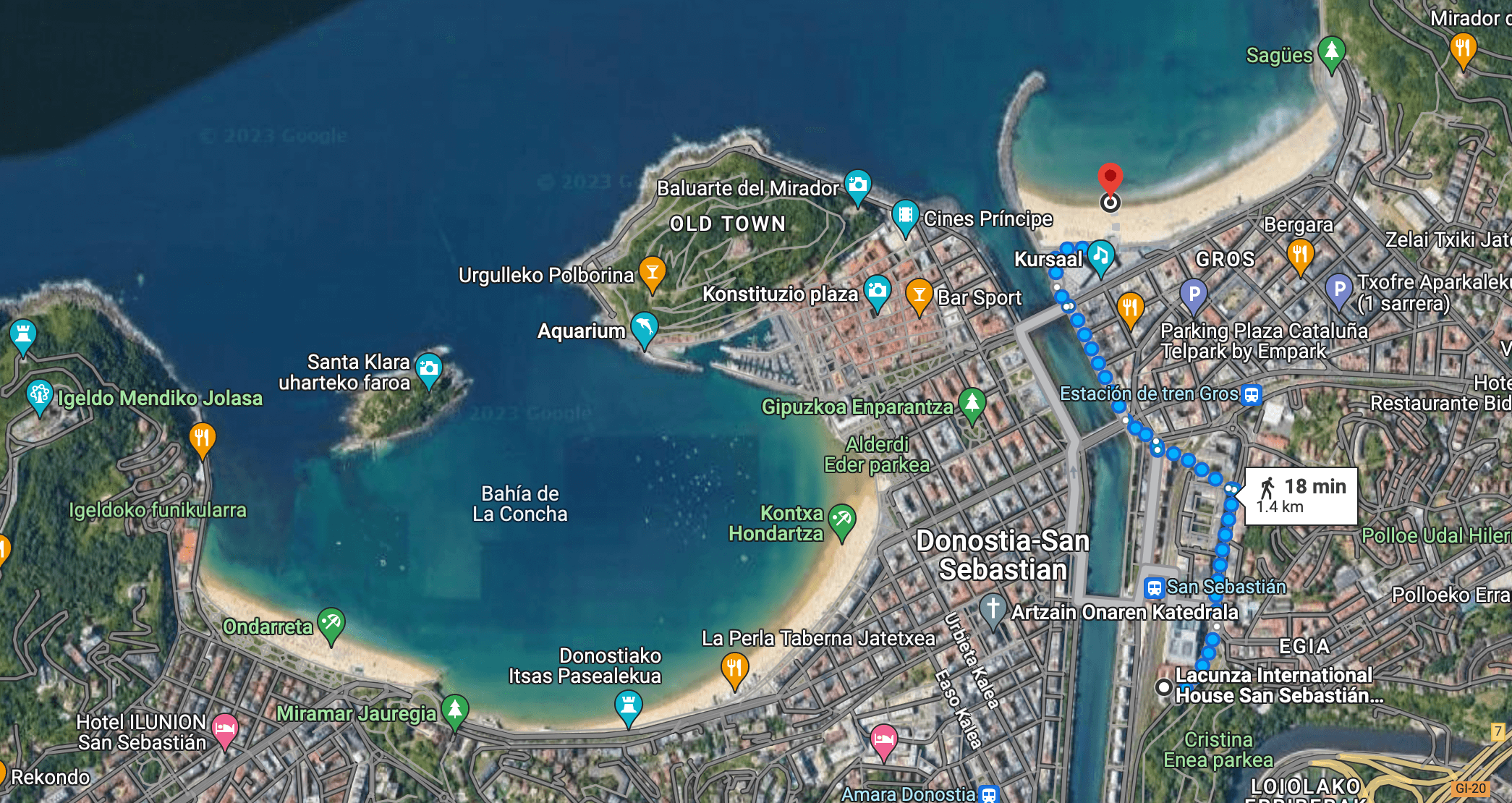

Facilities
The school is quite tucked away, looking over the railway. It’s surprisingly spacious, boasting a number of small classrooms, a nice open social area and terrace where the school often hosts student events.
The one thing I would say is that in a very San Sebastian fashion, quite a few of the classrooms are internal, meaning that they have no windows! This is very typical of the city and I quickly got used to it.
The school has a nice selection of books, from textbooks to graded readers (stories at each CEFR level), which you can borrow for free as a student.


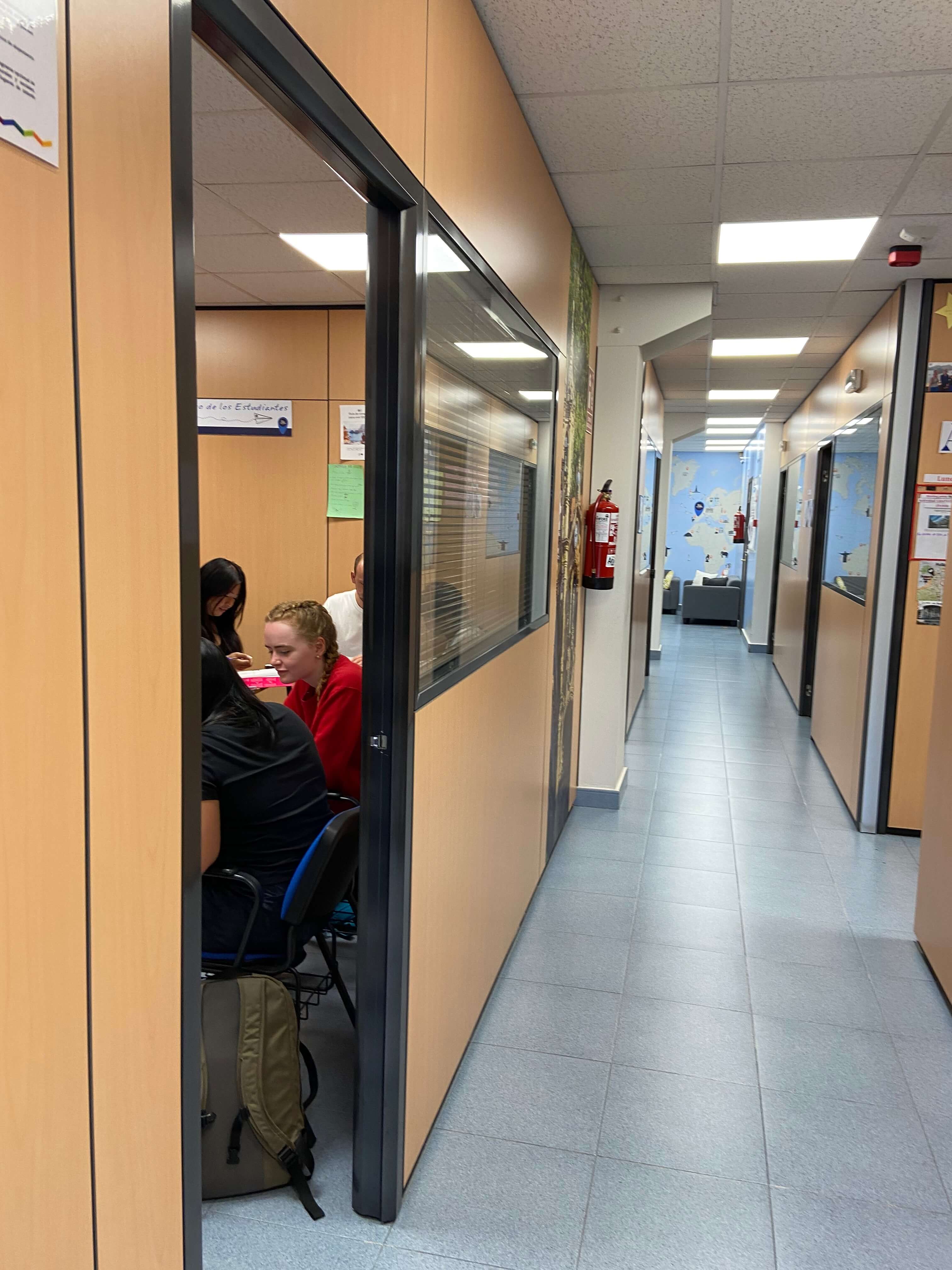

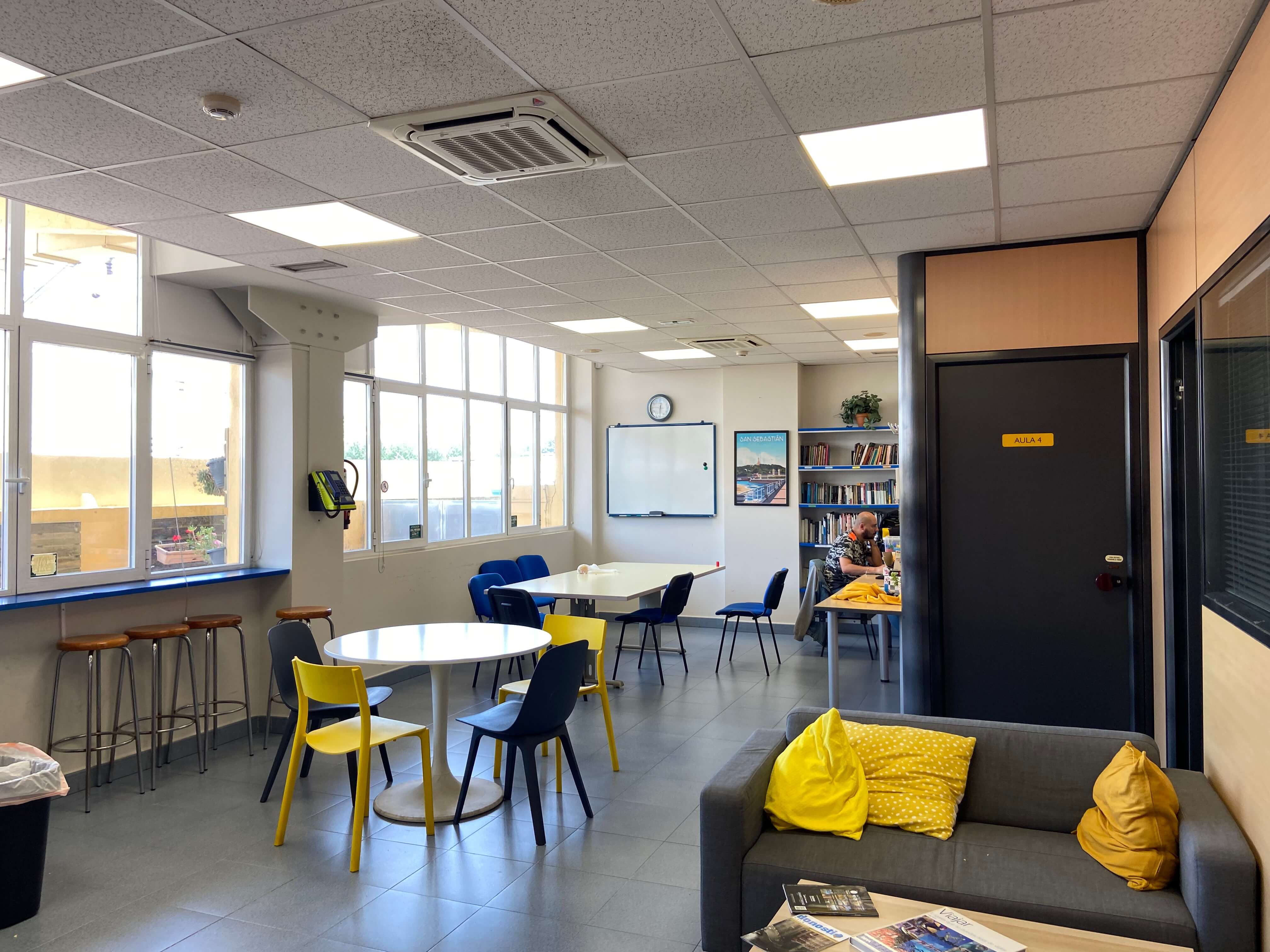
Course and teachers
The quality of teaching at the school is phenomenal; courses run between 9am and 1pm, with a 30-minute break at 11am. All classes are multi-national and they are taught exclusively in Spanish. If you’re a beginner, you’ll need to select specific dates to start a course, for other levels, you can start on any Monday.
I progressed really quickly as a student, well enough for the school to accept me as an intern after my course, where I worked in Spanish and English, managing the student accommodation in the city. This meant that I got to know the Lacunza team even better; they’re all great!
I took both the B1 and B2 CEFR exams during my time in San Sebastian; the preparation courses were excellent.
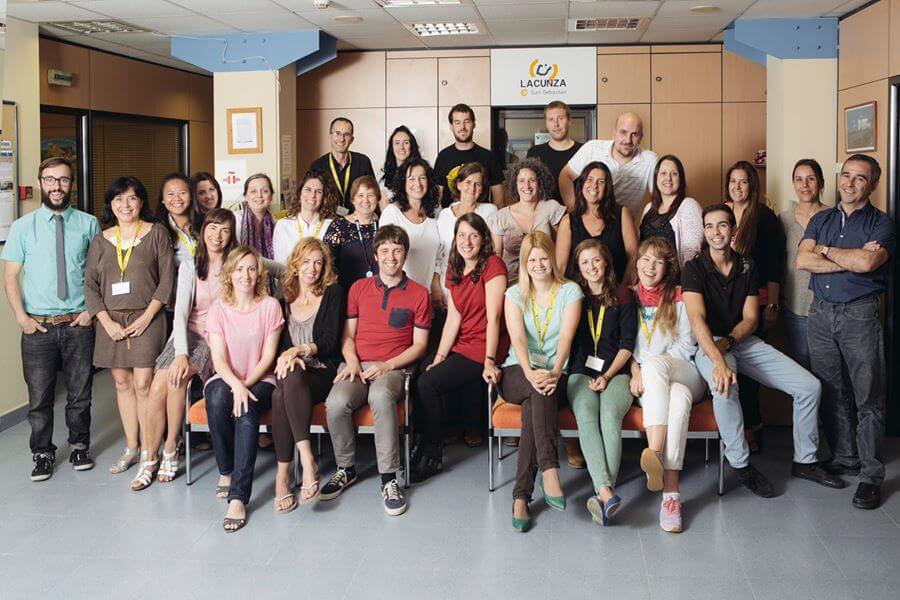

Tip!
Basque is also spoken in San Sebastian, all over the Basque country and exclusively in some of the more remote areas. It’s worth picking up a few words that you’ll hear a lot in the city.
For example, you’ll never hear a local say “adios”; instead, they’ll say “agur” when they say “goodbye”. Other staples are “kaixo” [KY-SHOH] – “Hi” and “eskerrik asko” [ESS-KAH-REE-KASS-KOH] – “thank you.”
For further context on (and a rather steretypical, but at times accurate view of) Basque culture, check out the film Ocho Apellidos Vascos.
Accommodation
I booked my first two weeks through the school, to give me time to settle in and go and view rooms locally for the rest of my stay. My first two weeks in the city were my ticket to an amazing time; I lodged with a local woman called Esther, in Gros neighbourhood, which sits next to Zurriola beach.
On my first night in town, she offered to take me for a ride around the city on the back of her moped, before she headed to work as wait staff, in none other than Michelin star restaurant Kokotxa.
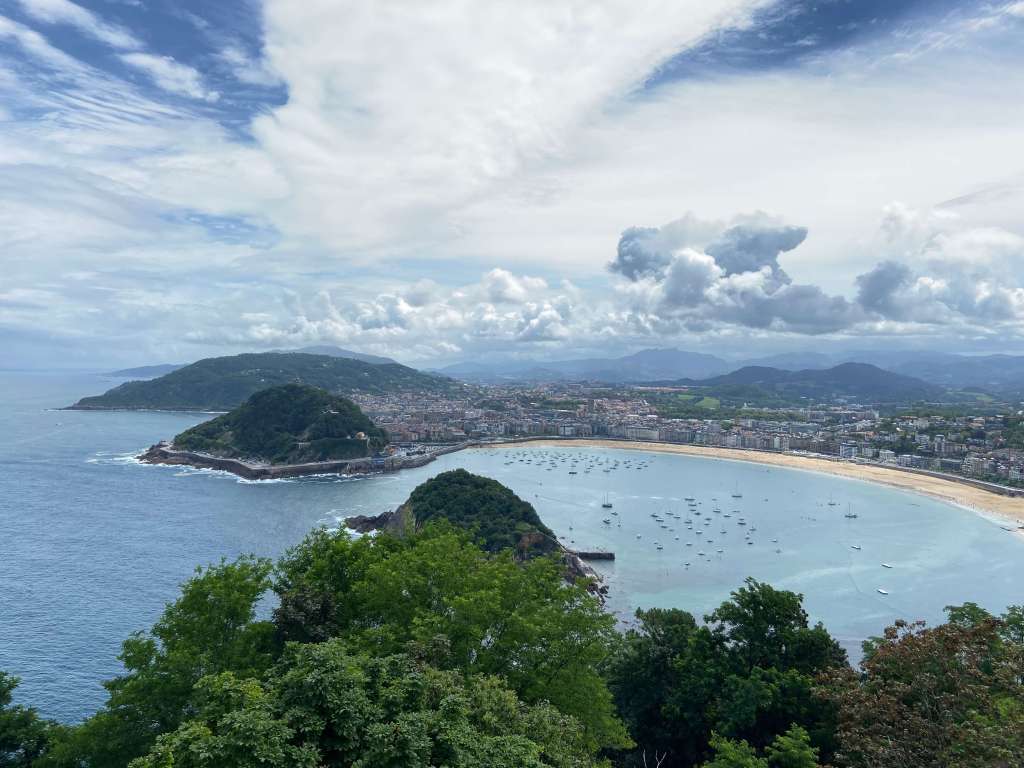
Post-mini tour, she walked me through the old town to show me where she worked, and introduced me to the chefs who worked at Kokotxa at the time. That was my first introduction to the culinary delights of San Sebastian, which was the start of a very Basque and culturally-enriching experience.
Esther’s flat was an interesting one; firstly, even back in 2013, she didn’t have wifi, and like many flats in San Sebastian, my bedroom had an internal window.
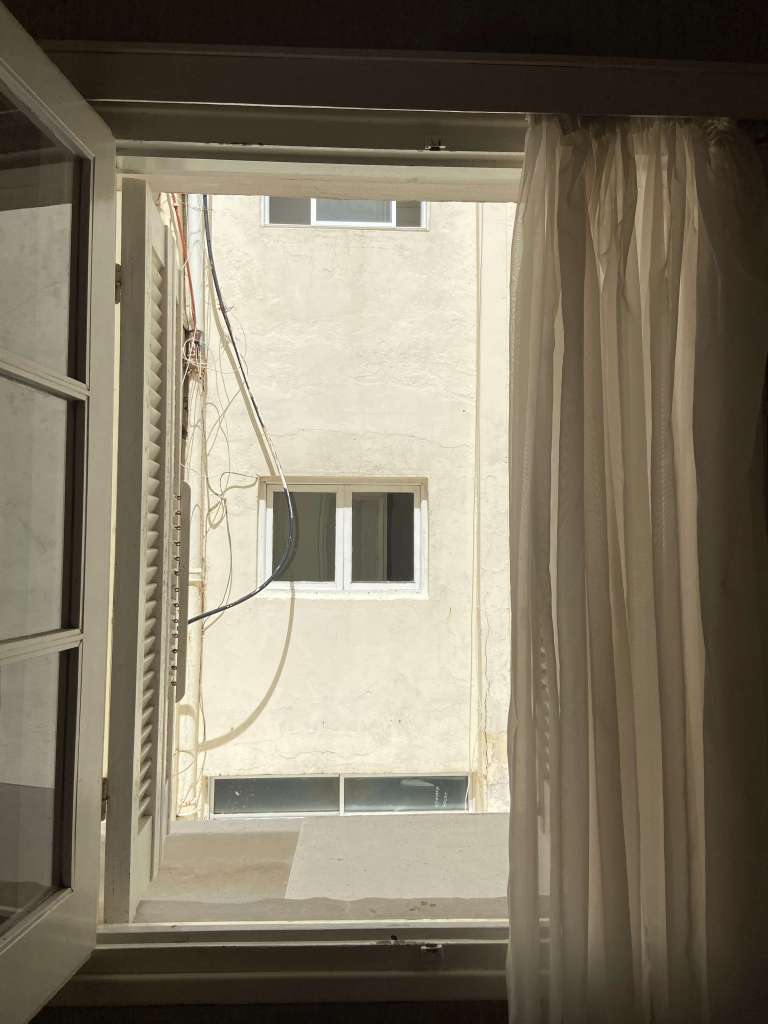
I don’t have a photo of the brick wall I got to know so well anymore, but during my recent trip to Uruguay, where my hotel in Piriápolis boasted a similarly 2D view, I felt a pang of nostalgia for what one student at Lacunza described (referring to the internal window in his host flat) as “like living in a bunker.”
This was a tad overdramatic; his host’s flat and Esther’s flat were lovely. When you know going in that this is incredibly common in San Sebastian, it’s less of a shock to anyone used to rolling countryside views or edgy cityscapes.
And besides, what Esther’s place lacked in Emily in Paris-esque views, as well as the wifi problem (which made me infinitely more sociable by the way), was more than made up for in the world that Esther introduced me to. She wasn’t just a host, she was my Spanish fairy godmother. I highly recommend, if given the choice of whether to stay with locals or other students, always choose the local. They are your ticket to a magical stay.
Value for money
When looking for schools in which to learn Spanish in Spain, I took the International House franchise as my reference point. I’d previously taught English at International House Bristol, and I knew “IH” was a stamp of quality. Whilst the San Sebastian school is not the cheapest on offer of all of IH Spain, it was their trimester course that sold me on it. They offer a reduced fee for courses of 12 weeks, and in choosing to do the course in Autumn, the price was further reduced. The 2023 winter (Jan-March) and autumn (Oct-Dec) courses cost 1.590€, coming out as 132.50€ per week, equalling 26.50€ a day.
Competing schools in San Sebastian include Tandem, whose 12-week course is more expensive (1798€), but they also offer reduced 8 and 24 week options, which Lacunza does not. El Aula Azul also provides Spanish courses at a weekly rate, but has no longer stay offer.
When comparing courses in somewhere like San Sebastian and other Spanish cities (particularly in the south, e.g. Andalusia), it’s worth noting that the cost of living is significantly higher, from rent, to food and leisure activities. As a general rule – most things from rent to restaurants – are cheaper in Madrid than in San Sebastian, but are more expensive in Barcelona than in San Sebastian.
Depending on where you earn your money, this difference may be negligible, or could completely impact your quality of life during your study break. Make sure to do a price comparison for rent, groceries, the course price, and anything else you want to factor in.
Extra-curricular
The activities schedule at Lacunza is incredibly varied. The weekly offers include local activities in the city, from cooking classes to surf lessons. They also organise trips to other parts of the Basque Country and further afield, including Biarritz and Pamplona. For those with a smaller budget, they offer cheaper events such as a student picnic, a beach trip or a barbecue on the school’s terrace.
It’s worth noting that you can organise lots of these yourself, but if you’re keen to get to know other students, this is a great way to do it.
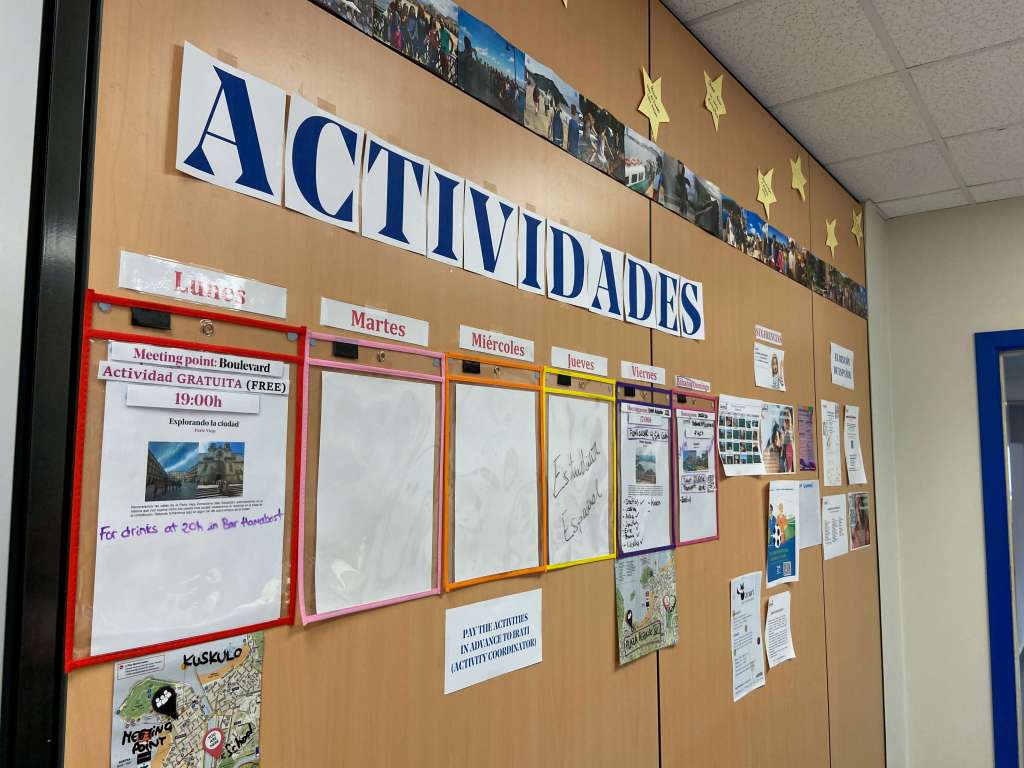
Check out my 15 things to do over a week in San Sebastian post for ideas of what to do in the city.
I don’t know whether the school still offers this, but many years ago when I studied there, there was a big wall in the school covered in little messages from locals looking for language exchange partners. I met so many locals through this, which helped me improve my Spanish loads, and gave me a real insight into Basque culture.
My most fascinating discovery was the “cuadrilla.” This Basque concept refers to a friend group comprised exclusively of childhood friends. These groups are usually single sex (though there are exceptions), and they are generally impenetrable. I never got an invitation to hang out with any of my Basque friends’ cuadrillas and this is totally normal!
Favourite thing
San Sebastian’s food offer is a bit of a given here; check out my A weekend in San Sebastian: pintxo-hop like a local post for more on this.
Beyond this, the geographical advantage of San Sebastian is substantial. Firstly, it’s a city that benefits from sandy beaches, luscious, green mountains, Atlantic winds and hot weather, making it a very active city where you can hike, swim, paddle board, surf, kayak, cycle, skate, mountain bike, run and more.
Secondly, it’s close to so many amazing places worth a visit, from Getaria, Biarritz, Hondarribia, Guernica, Gaztelugatxe, Bilbao, Pamplona and more.

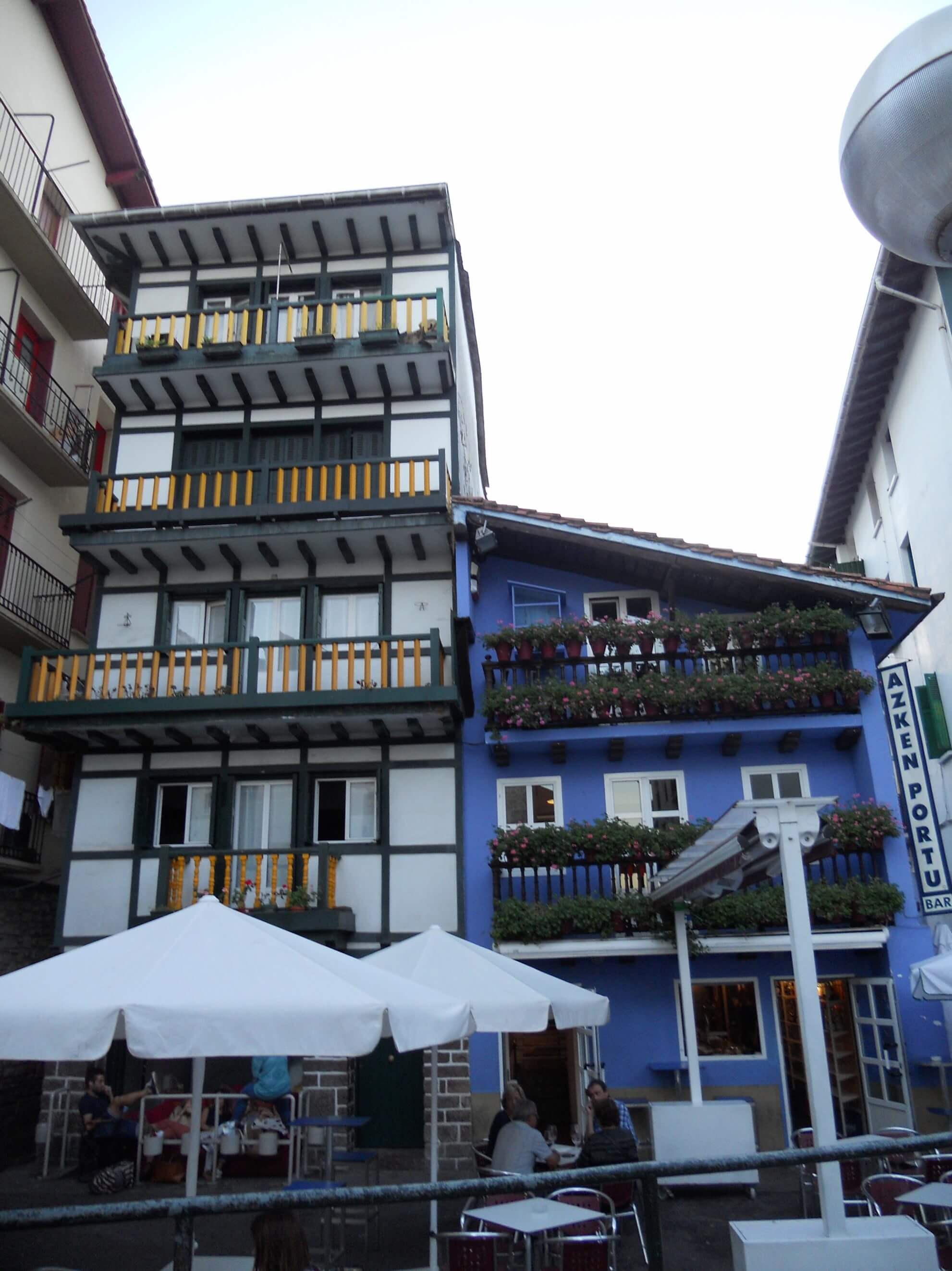




Final thoughts
San Sebastian really is an incredibly special place; I’ve been back many times since leaving all those years ago.
My greatest souvenir is the below video to promote tourism in the city; I had the good fortune of being hired to appear in the video! If this video doesn’t sell you on the city, I don’t know what will:
Does this tempt you to book that language sabbatical? Check out my post on 9 tried-and-tested ways to live your best short-term language immersion abroad for tips.
Psst! If you liked this post, please give it a like below 😊👇!


Leave a comment